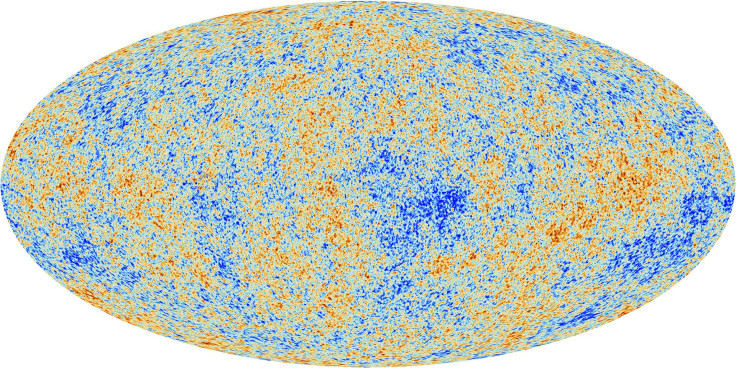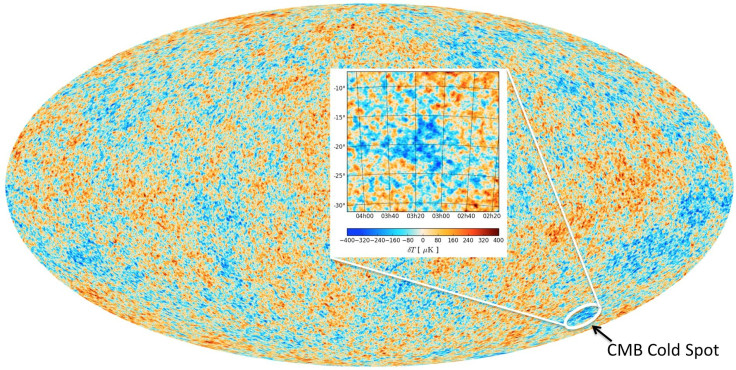Cold Spot In Universe’s Cosmic Microwave Background May Have “Exotic Origin”

A few hundred thousand years after the Big Bang, when the universe underwent recombination — the name to describe the event when the first electrons and protons came together to form hydrogen — one of the effects was the production of the cosmic microwave background, a faint omnipresent radiation left over from the time that we can observe and measure even today. As the universe expanded, the CMB began cooling from its initial temperature of about 3,000 Kelvin (almost 5,000 degrees Fahrenheit) to its present-day coolness of 2.73 Kelvin (-454.75 degrees Fahrenheit).
However, even though most irregularities were smoothed out by the universe’s ongoing expansion, some odd patches still remain. One such anomaly is the Cold Spot in the CMB, which causes problems in the standard model of cosmology. First discovered by the Wilkinson Microwave Anisotropy Probe spacecraft in 2002, and confirmed in 2013 by the Planck satellite, the Cold Spot is a large area in the region of the sky that has the Eridanus constellation.

The Cold Spot is colder than its surroundings by only a fraction of a Kelvin (0.00015 Kelvin) but even that small deviation has a probability for occurrence of less than 2 percent, given the size of the area. Conventional explanations, such as a large void billions of light-years across but containing relatively few galaxies, has been disproved by new research.
Postgraduate student Ruari Mackenzie and Professor Tom Shanks of Durham University in the United Kingdom led a team of researchers who analyzed a dataset of 7,000 galaxies, collected using a spectrograph on the Anglo-Australian Telescope in Australia. The team found the Cold Spot is not one giant void, but instead, is split into smaller voids, each of which are surrounded by clusters of galaxies with the same density as other places in the universe.

In a statement Tuesday, Mackenzie said: “The voids we have detected cannot explain the Cold Spot under standard cosmology. There is the possibility that some non-standard model could be proposed to link the two in the future but our data place powerful constraints on any attempt to do that.”
While the standard model could still explain the Cold Spot — as an unlikely fluctuation — the chance of that is just about 1 in 50, according to the statement by the researchers. So what then explains this cosmic anomaly? “Exotic” origins, Shanks said, while offering some possibilities.
“Perhaps the most exciting of these is that the Cold Spot was caused by a collision between our universe and another bubble universe. If further, more detailed, analysis of CMB data proves this to be the case then the Cold Spot might be taken as the first evidence for the multiverse — and billions of other universes may exist like our own,” he said.
The researchers published a paper, titled “Evidence against a supervoid causing the CMB Cold Spot,” that appeared in the journal Monthly Notices of the Royal Astronomical Society.
© Copyright IBTimes 2024. All rights reserved.











